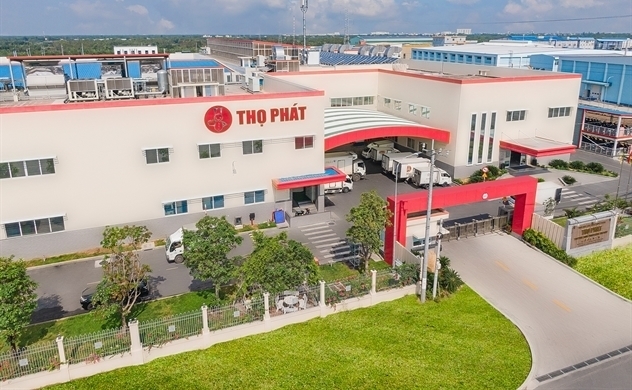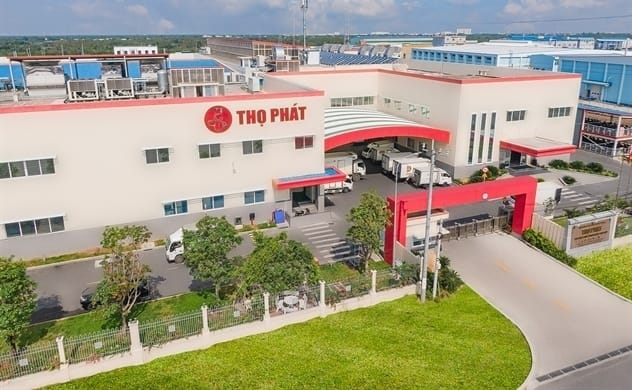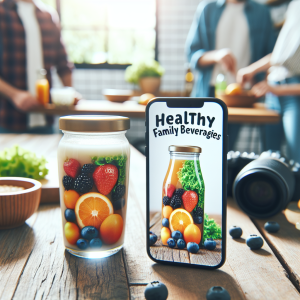
The reason Kido is able to pursue a sustainable M&A strategy is also thanks to its experience in doing well after M&A. Photo: TL.
Dumpling – a new puzzle piece of Kido
Kido didn’t say how long the negotiations took, but they said that they found out about Tho Phat in the fourth quarter of 2022, when the company returned to the candy business with Kido’s Bakery name. Tho Phat is ready to cooperate with Kido because they both want to reach the same goal and can help each other grow the Central and Northern markets and exports.
In fact, Kido used to think of dumplings as a problem that he wanted to solve. Kido has been making dumplings since the end of 2015. At the time, Mr. Tran Le Nguyen, General Director of Kido, said, “Dumplings are a potential segment with high profitability, about 40–50% of total revenue.” Kido once set a goal of giving 600,000 cakes to the market every day.
But Kido’s dumpling business could not survive when it comes to self-implementation. Kido chose to try something else: buying and selling, or mergers and acquisitions (M&A). Mr. Nguyen said, “Buying shares in Tho Phat is a key way for the company to grow its food offerings in the Vietnamese market.”
Kido thinks that the bakery section, which includes Tho Phat, will bring in about VND 2,000 billion in sales and make about VND 200 billion after taxes in 2023. Kido wants to be the second biggest name in the fresh bread business in the next 3–5 years.
M&A of big companies has become Kido’s best way to reach its growth goals, and brothers Tran Kim Thanh and Tran Le Nguyen used it right away. Usually, Kido bought Wall’s Ice Cream from Unilever about 20 years ago. In 2003, Ice Cream Wall’s had about half of the ice cream market in Vietnam. But Unilever lost money on Wall’s Ice Cream, so it “let go” of the brand.
Kido signed up to buy back, and after only 6 months, Kem Wall’s “turned the table” and went from losing money to making money. Kido’s ice cream section still has the biggest market share (44.5%). It grows by 20–30% on average every year and is a big part of Kido’s business.
There are times like 2016 when Kido sold the candy and ice cream business for the first time. That business brought in 75% of Kido’s income at the time. Kido’s ice cream business was so successful that Unilever was ready to pay 10 times as much as Kido did ($200 million) to buy Wall’s Ice Cream, but Kido said no.
Kido’s merger of Vinabico into the Group in 2008 was another good deal. With this union, Kido was able to reach its goal of growing the baking and candy industries. Vinabico has the largest market share.
Kido has moved up to second place in the cooking oil business, just behind Cai Lan, thanks to its takeover of top names like Dau Tuong An, Vocarimex, and Golden Hope Nha Be (now called Kido Nha Be). Euromonitor says that Kido through Tuong An has 74.9% of the margarine market, which makes them the market leader.
Kido has spent billions of dollars and worked hard for years to get Tuong An and Vocarimex to live in the same house. The episode about cooking oil became the constant, and Kido looked forward to it a lot. According to Kido’s yearly report for 2022, 82% of the company’s income came from the cooking oil business.
New M&A strategy
Kido has grown by leaps and bounds thanks to mergers and acquisitions. From 2005 to 2009, Kido made less than VND 1,500 billion in sales. By 2010, when Northern Kinh Do and Kido’s Kem merged, Kido’s sales went up sharply to over 3,000 billion VND, and the company’s profit went from VND 250 billion to more than VND 400 billion.
But since 2014, Kido’s sales have only grown by about VND 4,200–4,300 billion a year. Many financial experts thought that Kido’s leaders were trying to keep profits high by lowering running costs because it was hard for the company to bring in more money. The MAF study team said, “Kido is a typical example of a domestic company that did a lot of mergers and acquisitions and did well.”
But Kido’s M&A journey had a lot of mistakes, just like a lot of other companies. The biggest ones were at Tribeco in 2005 and Nutifood in 2007. The head of a company that specializes in mergers and acquisitions once said that Kido had not made good use of both companies’ delivery systems in the Tribeco deal. Kido also didn’t have enough power to change the company because he didn’t have as many shares as his partner. business plan, which makes business actions go in different directions.
But because Tribeco and Nutifood failed, Kido’s bosses came up with their own M&A plan. That means reorganizing the system, finances, and staff to lay the groundwork for mergers and acquisitions (M&A); knowing culture and market traits; evaluating the company before M&A; continuing to hold controlling shares; growing the size of the business; making different goods, but making sure they meet basic needs (like food). In particular, the two sides can’t have too many different ideas in order to work together.
But Kido is also able to follow a sustainable M&A plan because it has done well in the past after an M&A. Complex M&A problems like hiring, filling, training, culture unity, and trade are all part of the post-M&A process and affect whether a deal works or not.
Kido is still using this M&A method right now. Kido will focus on four businesses in 2023 and the years after that: cooking oil, ice cream, sweets, and spices (fish sauce). Kido wants to use the cold distribution channel (120,000 points) for the bread industry and combine the dry distribution channel (450,000 points) for the spice industry. Also, Kido’s main plan is to add new goods based on how each customer likes things, what they need, what’s popular, and what they like.
Even though the goal changes at each milestone, Mr. Nguyen said, “Increasing the size of the market through mergers and acquisitions (M&A) and expanding cooperation will still be Kido’s top focus.”





